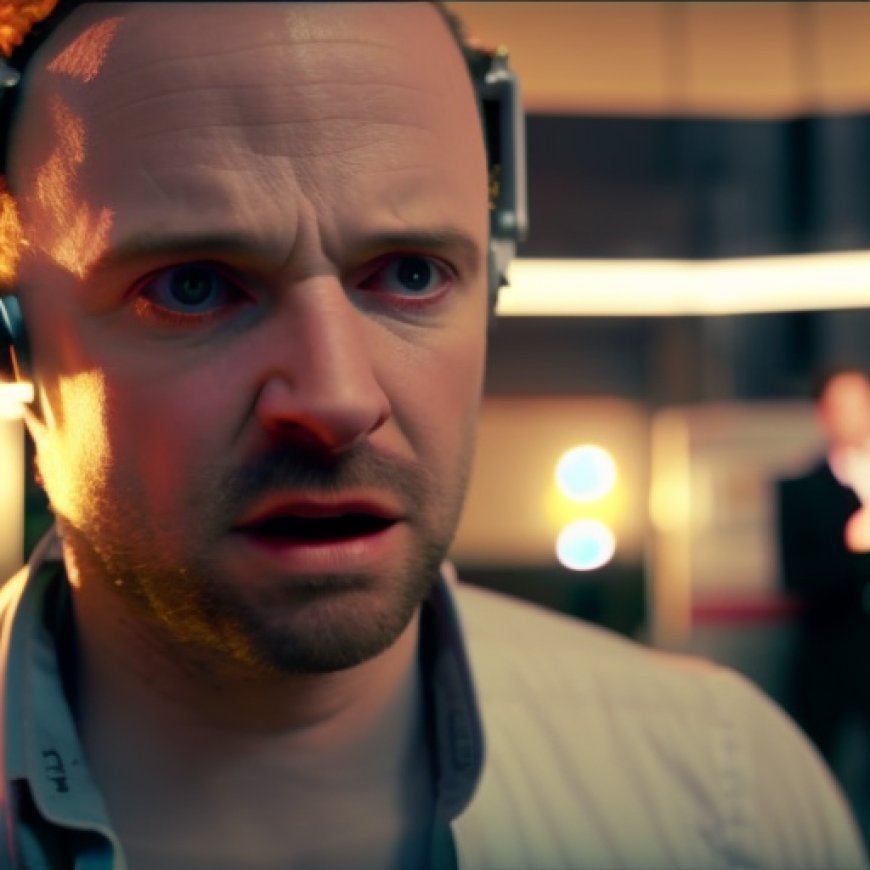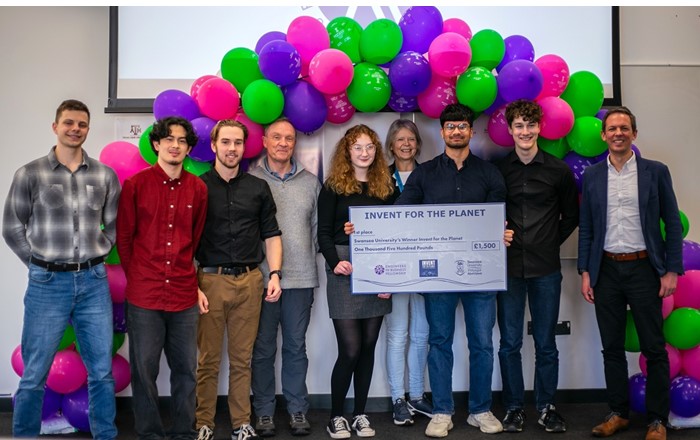Swansea student inventors’ idea for safe drinking water reaches semi-final of international design competition
Swansea student inventors' idea for safe drinking water reaches semi-final of international design competition Swansea University


A Team of Swansea University Students Advances to European Semi-Final of “Invent for the Planet” Competition

A team of Swansea University students has successfully designed a filtration system aimed at making river water safe for drinking. Their innovative solution has earned them a spot in the European semi-final of the global design competition called “Invent for the Planet”. Organized by Texas A&M University, the competition involved 20 universities from 15 countries. Swansea University was the sole representative from the UK.
Global Challenges and Sustainable Development Goals (SDGs)
Participating students formed local teams and selected global challenges to address. This year’s challenges included improving access to clean water in Papua New Guinea, creating innovative housing solutions for growing populations, reducing bycatch to protect marine life, and developing sustainable energy solutions for sub-Saharan African countries. These challenges align with the United Nations’ Sustainable Development Goals (SDGs), specifically Goal 6: Clean Water and Sanitation, Goal 7: Affordable and Clean Energy, Goal 9: Industry, Innovation and Infrastructure, and Goal 11: Sustainable Cities and Communities.
Competition Process and Participants
Each team had 48 hours to research their chosen challenge, create a prototype, and develop an elevator pitch. The teams then presented their solutions to a panel of judges. A total of 40 Swansea students, representing 11 countries and 12 subjects within the faculty of Science and Engineering, participated in the competition.
The Winning Team: Pure Flow
The winning team, named Pure Flow, consisted of six students: Francesca Jarvis (maths and computer science), Sean Calucag (chemical engineering), and Hywel Crawley, Harry Griffiths, Sanskar Aryal, and Oskar Augustin (all mechanical engineering). Their challenge was to invent a solution to improve access to clean water and sanitation in Papua New Guinea, considering the country’s challenging geography.
Pure Flow’s solution was a low-cost and low-maintenance filtration system designed to filter river water and provide clean drinking water to rural populations.
European Semi-Final and Future Development
Pure Flow recently competed in the European semi-final, held at Atlantic Technological University in Galway, Ireland. Although they narrowly missed out on first place, they were recognized as runners-up. The team presented an early prototype of their filtration system, which the judges deemed to have the potential to become a viable product. Swansea University’s enterprise team, known for supporting student start-ups, will provide guidance on further developing the idea.
Student Testimonials
Members of the winning team shared their experiences:
- Sanskar Aryal, a second-year Mechanical Engineering student, said: “Invent for the Planet was awesome! I loved every challenge and activity and will be taking away a driven mindset, the feeling of overcoming a challenge, and some really good memories.”
- Oluwadra Bobade, a second-year Electrical and Electronics Engineering student, said: “It was a fantastic experience – this is what engineering is about! I’d do it again in a heartbeat.”
- Ashima Anand, an MSc Structural Engineering student, said: “It was an amazing experience to work with new people from other subjects and years, and we had so much support from the staff. I would do it again 100%.”
Swansea University’s Partnership with Texas
Swansea’s success in the Invent for the Planet competition is a testament to the flourishing partnership between Swansea University and leading universities in Texas, such as Texas A&M University. This partnership extends beyond the competition and includes student exchange schemes and research collaborations in areas like nanomedicine.
Organizers’ Perspectives
Dr Caroline Coleman-Davies, Texas Strategic Partnership lead and co-organizer for Invent for the Planet, expressed her gratitude to Texas A&M University for providing Swansea students with the opportunity to participate in this unique event. She highlighted how the competition allows students to collaborate with peers from different disciplines and year groups, as well as interact with participants and mentors from around the world.
Kelly Jordan, Senior Entrepreneurship Officer and co-organizer for Invent for the Planet, emphasized how the competition helps students develop their entrepreneurial skills and apply their engineering and scientific knowledge to make a positive impact on the world. She also commended the enterprise team for their role in supporting students’ entrepreneurship development.
Judges’ Recognition
Professor Helen Griffiths, Pro Vice Chancellor for research and one of the judges for the competition, congratulated all the teams on their impressive achievements. She praised the entrepreneurial creativity and capabilities demonstrated by the Swansea University students in developing concepts, prototypes, and pitches within just 48 hours.
Sponsorship and Collaboration
The 2024 Invent for the Planet competition was sponsored by the Engineers in Business Fellowship. The event was delivered by a cross-University team comprising experts from Research, Engagement and Innovation Services, Academic Partnerships, and the faculties of Engineering, Chemistry, Physics, and Geography.
SDGs, Targets, and Indicators
1. Which SDGs are addressed or connected to the issues highlighted in the article?
- SDG 6: Clean Water and Sanitation
- SDG 7: Affordable and Clean Energy
- SDG 9: Industry, Innovation, and Infrastructure
- SDG 11: Sustainable Cities and Communities
2. What specific targets under those SDGs can be identified based on the article’s content?
- SDG 6.1: By 2030, achieve universal and equitable access to safe and affordable drinking water for all.
- SDG 6.2: By 2030, achieve access to adequate and equitable sanitation and hygiene for all and end open defecation, paying special attention to the needs of women and girls and those in vulnerable situations.
- SDG 7.1: By 2030, ensure universal access to affordable, reliable, and modern energy services.
- SDG 9.4: By 2030, upgrade infrastructure and retrofit industries to make them sustainable, with increased resource-use efficiency and greater adoption of clean and environmentally sound technologies and industrial processes.
- SDG 11.1: By 2030, ensure access for all to adequate, safe, and affordable housing and basic services and upgrade slums.
3. Are there any indicators mentioned or implied in the article that can be used to measure progress towards the identified targets?
- Access to safe and affordable drinking water for rural populations in Papua New Guinea.
- Development of a low-cost, low maintenance filtration system for river water.
- Improving access to clean water and sanitation in Papua New Guinea.
SDGs, Targets, and Indicators
| SDGs | Targets | Indicators |
|---|---|---|
| SDG 6: Clean Water and Sanitation | 6.1: By 2030, achieve universal and equitable access to safe and affordable drinking water for all. | – Access to safe and affordable drinking water for rural populations in Papua New Guinea. |
| 6.2: By 2030, achieve access to adequate and equitable sanitation and hygiene for all and end open defecation, paying special attention to the needs of women and girls and those in vulnerable situations. | – Improving access to clean water and sanitation in Papua New Guinea. | |
| SDG 7: Affordable and Clean Energy | 7.1: By 2030, ensure universal access to affordable, reliable, and modern energy services. | – Development of a low-cost, low maintenance filtration system for river water. |
| SDG 9: Industry, Innovation, and Infrastructure | 9.4: By 2030, upgrade infrastructure and retrofit industries to make them sustainable, with increased resource-use efficiency and greater adoption of clean and environmentally sound technologies and industrial processes. | – Development of a low-cost, low maintenance filtration system for river water. |
| SDG 11: Sustainable Cities and Communities | 11.1: By 2030, ensure access for all to adequate, safe, and affordable housing and basic services and upgrade slums. | – Improving access to clean water and sanitation in Papua New Guinea. |
Behold! This splendid article springs forth from the wellspring of knowledge, shaped by a wondrous proprietary AI technology that delved into a vast ocean of data, illuminating the path towards the Sustainable Development Goals. Remember that all rights are reserved by SDG Investors LLC, empowering us to champion progress together.
Source: swansea.ac.uk

Join us, as fellow seekers of change, on a transformative journey at https://sdgtalks.ai/welcome, where you can become a member and actively contribute to shaping a brighter future.







